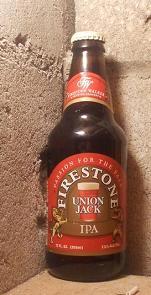The other day I read one of the more interesting passages of beery thought that I had read in some time. It’s from a response to a post at Jeff’s Beervana about the wonky less than linear history of beer styles:
While it’s entirely possible that malt bills and hopping rates of many of craft brewing’s “new” styles might have had occurrences in the past for which records are poor, incomplete or just plain lost, historically brewers could NOT have brewed beers that we’d be able to directly compare to some of the popular craft brewing styles today. Why? Ingredients. There are simply varieties of malts and hops available to brewers today that are, in a word, new. These newer varieties are creating flavor profiles that weren’t really available to brewers of yore. Hell, the venerable Cascade hop only came into usage in the 1960’s I believe. Combinations of malt and hops in the way they are used today, but using instead the varieties (including malting techniques) of, say, a hundred years ago, would have yielded beers that are so dramatically different that we’d say that they were different styles. IPA is a simple example. One of the key characteristics of the “American IPA” is not just how much hops are used, but the fact that the bitterness, flavor and aromatic profile is centered around newer American varieties of hops.
I like this. It admits that the fashionable brewer is dependent on the new ideas of the maltster and the hop grower. And on new ways of doing things. But we know also the Albany Ale project has proven the opposite is quite true as well. Ingredients (aka stuff) which once were are no more. We have no idea what Cluster was like in 1838 any more than we know what hop will govern in 2038. We live on a river of time where the shock of the new is nothing compared to the disappearance of the past. And, if that all is true, are the style guidelines – like those updated as announced in a press release from the Brewers Association today – really as heinous as we might all quite comfortable suggest to each other? Or do they just express the today we happen to find ourselves facing? Put it this way – if new forms of ingredients and new ways of brewing should come into the market, why shouldn’t new names and concepts of classes be added to describe them as these are woven into our beer?
Let me illustrate the point.with an analogy to the strength of pale ales. The other day when I was doing my drinks free drinks dialogue I discussed how the range was both expanding and filling in. I suggested that I now needed a new word to be coined for me to describe US pale ales between 5.6%-ish and 7.4% or so. Something between a pale and an IPA that might itself be from 7.5% to about 8.5% where the double IPA may start to make merry up on up to 10% before they yield in turn to imperial IPAs. None of that really makes sense when compared to brewing heritage or even recent trendy trends… but if I am having a 6.5% brew, I have no illusions that I am in league with either a 4.9% or a 8%. I want to have words to describe this difference.
If that is the case, is difference based not on strength but on a change in methods or a novel ingredient so wrong? We all know that these style guides are not ultimately important let alone critical to understanding and appreciating beer. We admit that. But are they wrong? Consider the idea of “field beer” at page 30 of the new guidelines for example. Clearly deciding to disassociate itself from the downside of vegetable, it is a splintering off from fruit beer and herb beer. Fern ale might fit in here. Sure we would need someone to pick up and brew the style last described in 1668 but if it not only were brewed but then became the pervasive fashion totally replacing retro light lagers as the preferred drink for the hipsters of 2038 – why not describe it as its own separate style?
 A short flip across the border nabbed me a six of this new New York offered Firestone Walker. There were three others, their DIPA, porter and 15 were there, too at $8.99, $6.99 and a whopping $21.99 respectively. The last one was in a cardboard box. I had no idea a cardboard box added so much cost. I grabbed a couple of the Double Jack DIPAs leaving the stuck up sibling and the under appreciated plain Jane behind.
A short flip across the border nabbed me a six of this new New York offered Firestone Walker. There were three others, their DIPA, porter and 15 were there, too at $8.99, $6.99 and a whopping $21.99 respectively. The last one was in a cardboard box. I had no idea a cardboard box added so much cost. I grabbed a couple of the Double Jack DIPAs leaving the stuck up sibling and the under appreciated plain Jane behind.